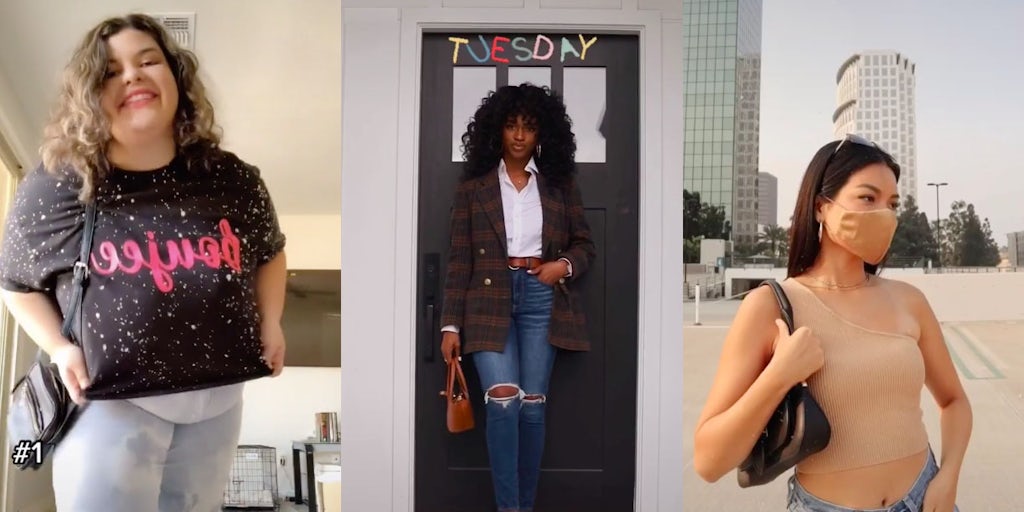VOICES 2020: Retail in the Roaring ’20s | BoF Professional, News & Analysis
In a single year, up to 25,000 stores in the US alone are expected to close. Major retailers have filed for bankruptcy, while millions of households have been forced to tighten their spending.
And yet, 2020 is setting the stage for the next era of retail.
“This is indeed a strange and difficult time for many of us,” Doug Stephens, retail consultant and the founder of Retail Prophet, said at VOICES, BoF’s annual gathering for big thinkers, kicking off six panel discussions that explored the silver linings of the pandemic and the opportunities waiting in 2021 and beyond.
“Think about the 1918 Spanish flu,” Stephens said. “It led to something else: it led to the Roaring ‘20s, a time of amazing prosperity, innovation and productivity.”
Stephens was joined executives including José Neves of Farfetch, early direct-to-consumer investor David Bell, Alibaba group president J. Michael Evans, and Story founder Rachel Shechtman, who each explored retail transformation, from the end of the first generation of direct-to-consumer brands to the continued relentless rise of now-dominant online players including Amazon and Alibaba.
Their conversations centred on an increasingly digital world, in which shoppers expect a seamless transition from online to offline to their mobile devices and brands must differentiate themselves with the utmost service and convenience.
If one thing was clear among all the panelists, it’s that in-person retail is not dead. Stores and the brands behind them together create a media channel, akin to social media and entertainment platforms, that already engage the consumer. Even online delivery services will play a role in physical retail, bringing the store to the homes of consumers while offering elements of surprise and delight one would expect to find in stores.
“I believe brands write cultural scripts,” said Cami Téllez, founder of the underwear brand Parade. “Brands today have to look a lot more like media companies.”
Redefining the Role of Brands in a Post-Pandemic Future
In the first presentation of the day, Stephens warned that a doom-and-gloom attitude toward the pandemic will prove shortsighted and unproductive.
Instead, we can’t “lose sight of the horizon [and] the deeper changes taking place under the surface,” he said, pointing to how the pandemic has already shifted the ways people live. Case in point is the millions of professionals who used to be commuters but now work from home.
Meanwhile, the shift to digital has enabled retail behemoths like Walmart, Amazon and Alibaba in China to not only dominate commerce but to also infiltrate other sectors of their lives, like healthcare, banking and education. Stephens refers to these retailers as “apex competitors” — retail contenders so large and powerful that for small and mid-sized brands to survive their dominance, they must radically evolve.
In other words, if a brand can’t compete with Amazon on convenience, it could offer a cultural point of view, as Nike does, or a new way of shopping, as exemplified by used car auction marketplace Carvana.
“In the post-pandemic retail era, purpose will be the new positioning,” Stephens said. “What is the one question that you in your brand alone is the ultimate answer to for a consumer?”
Stephens outlined 10 archetypes that will define the role of retail in the coming years, from activism and storytelling to product education and entertainment. Read his full report here.
The Last Mile Is the Last Frontier of Retail
Amazon may have normalised immediate gratification among consumers but luxury brands now have the opportunity to take it to the next level.
This opportunity is why Sojin Lee founded Toshi, a company that delivers items from luxury brands straight to the doors of customers to try on before they commit to the purchase. Toshi counts brands like Chanel and Anna Sui as clients.
But convenience alone will not drive customer loyalty, Lee said in conversation with Will Shu, founder and chief executive of food delivery app Deliveroo.
“We believe that the next opportunity lies in home service, or office service, and that it will be a normal, third-channel of sales that sits between offline and online,” she said. “But in fashion, on-demand for the sake of on-demand is not enough. We have decided to bookend that with service.”
This means delivering to shoppers not only the products but also the experiences they would have in the fitting room of a boutique, such as being able to try on different sizes and talk to a knowledgeable store associate.
To make it work, retailers have to play a part too, Lee said, beginning with improving their stock visibility and using stores as warehouses in order to join the on-demand economy.
Unpacking the Farfetch-Alibaba-Richemont partnership
The joint venture between Alibaba, Farfetch and Richemont has changed the fashion landscape, and on Thursday, two of its dealmakers joined BoF’s Imran Amed in dissecting the factors that went into the partnership.
For Alibaba, there were three visions that made the deal attractive, said J. Michael Evans, president of Alibaba Group. One was the opportunity in global luxury. Second was how Alibaba and Farfetch saw eye-to-eye on omnichannel retail. The third was that, in order to pull off a global luxury venture, partnership is necessary.
“We think as tech businesses, we’re not retailers,” said Neves, Farfetch’s chief executive. “We’re at the service of the best brands, the best retailers and we’re here to enable the industry…and this is open to everyone.”
Of course, the first opportunity is in tapping the fastest growing luxury market: China. Now that fewer Chinese nationals are travelling abroad, retailers like Alibaba that operate on their home turf have much to gain.
“The Chinese consumer isn’t traveling. They’re staying in China and buying products in China,” said Evans. “One of the reasons [Alibaba] is seeing so much growth is this repatriation benefit and we expect it to continue.”
The Next Generation of Direct-to-Consumer Brands
The first generation of direct-to-consumer brands are about a decade old. And with age comes staleness, according to some of their earliest investors.
To demonstrate how the millennial direct-to-consumer playbook is losing relevance, Anthony Sperduti, co-founder of design firm Mythology, created a fake brand that embodies all the tropes found in the playbook, from using millennial pink to imagery that includes a succulent. The result was Vowl — pronounced “vowel” but with the E dropped — a CBD product for dogs that bark.
“We were able to create this brand in a matter of two hours,” Sperduti said. “That’s how replicable the millennial playbook is.”
The need for freshness is paving the way for a new generation of DTC founders, such as Parade’s Téllez as well as Claudia Teng and Olamide Olowe, co-founders of skincare brand Topicals.
Unlike their predecessors, these new startups aren’t as reliant on paid social media marketing, instead organically building their communities by inviting their consumers to be their content creators.
“We build stories around the fact that our customers has been left out,” said Olowe, whose Topicals products cater to those with eczema and dry skin. “Really what we want our customers to do is have conversations among themselves and us,” around topics like toxic beauty standards.
Olowe and Teng created a campaign called “Burn Book,” a reference to the 2004 film “Mean Girls,” inviting their shoppers and Instagram followers to upload photos of themselves and talk about their skin.
Content is the New Merchandising
In the final presentation, Story’s Shechtman chatted with her friend, Ben Kaufman, co-founder of the children’s toy store, Camp.
Just like Shechtman’s own retail venture Story, Camp relies on creating novel experiences for shoppers as a way to lure them into the store and make purchases, embodying the notion that content and experience can be the most effective way to drive sales.
“People want a high return on investment on their time,” Shechtman said. “Time is something we cannot control or get more of.”
The solution for retailers, therefore, is to make the most out of consumers’ time, whether that’s in the form of fun live shopping experiences or unique installations that Camp creates.
VOICES 2020 is made possible in part through our partners McKinsey & Company, Affirm, SCAD and Invisible Collection.


